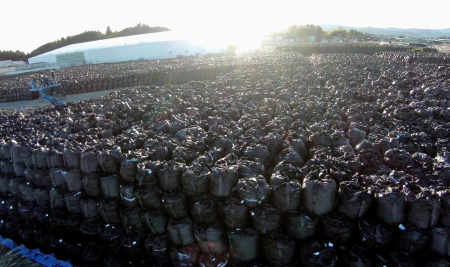The Japanese government on November 17, 2017 began the disposal of low-level radioactive waste generated by the 2011 Fukushima nuclear disaster, more than six years after the crisis triggered by the devastating earthquake and tsunami.
A disposal site in Fukushima Prefecture accepted the first shipment of the waste, which contains radioactive cesium exceeding 8,000 becquerels and up to 100,000 becquerels per kilogram, and includes rice straw, sludge and ash from waste incineration.
The Environment Ministry is in charge of the disposal of the waste, amounting to about 200,000 tons in 11 prefectures across the country as of the end of September 2017, Most of the waste, 170,000 tons, is in the prefecture hosting the crippled Fukushima Daiichi nuclear power plant.
Under the ministry’s policy, the waste is to be disposed of in each prefecture. However, Fukushima is the only prefecture where its disposal has started, while the other prefectures have met with opposition from local residents. In Fukushima, it will take six years to finish bringing the waste that has been stored in the prefecture into the disposal site, the ministry said.
Excerpt from National Disposal of low-level radioactive waste from Fukushima nuclear disaster begins, Japan Times, Nov. 18, 2017
